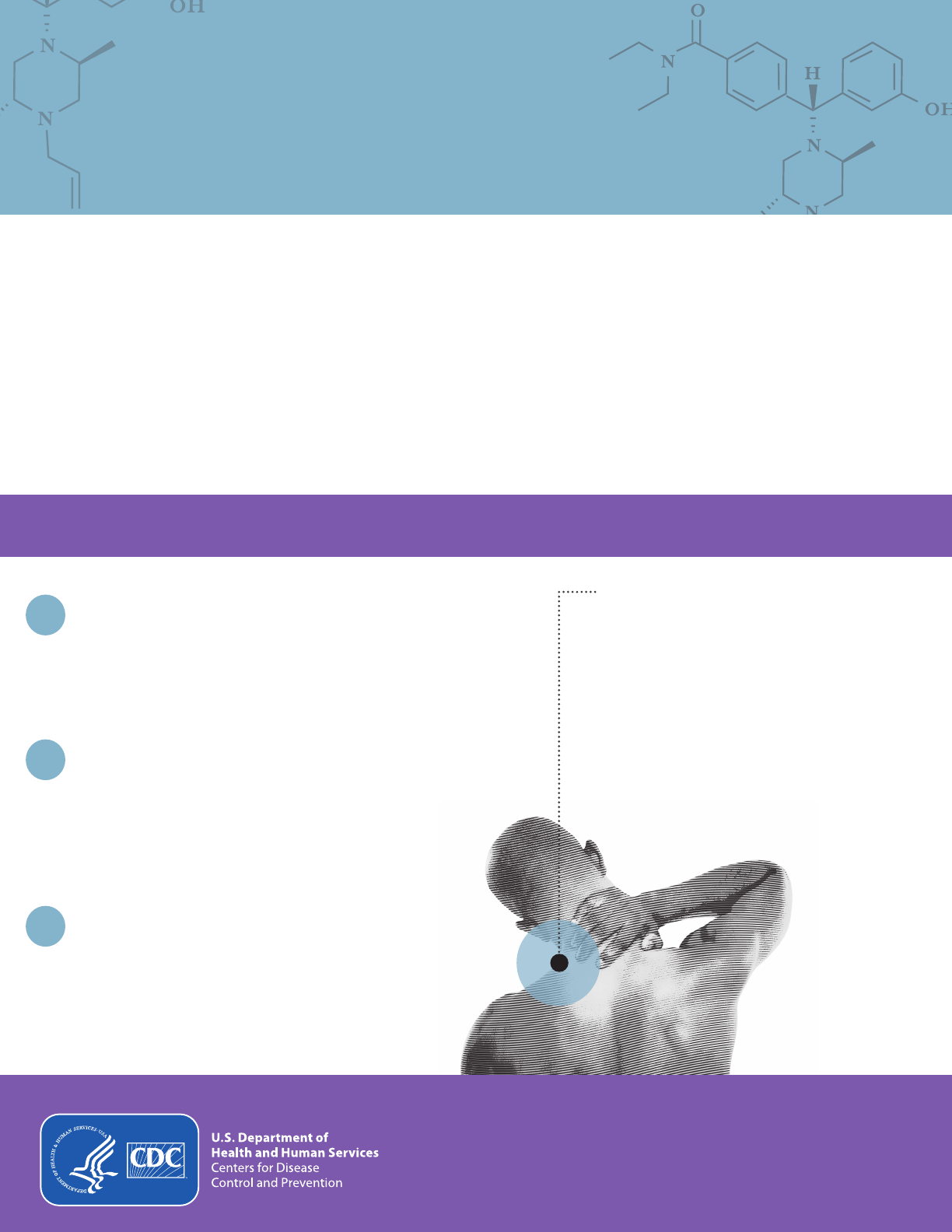
CDC’s Guideline for Prescribing Opioids for Chronic Pain is intended to improve communication between providers and
patients about the risks and benefits of opioid therapy for chronic pain, improve the safety and effectiveness of pain
treatment, and reduce the risks associated with long-term opioid therapy, including opioid use disorder and overdose.
The Guideline is not intended for patients who are in active cancer treatment, palliative care, or end-of-life care.
Nonpharmacologic therapy and nonopioid pharmacologic therapy
are preferred for chronic pain. Clinicians should consider opioid
therapy only if expected benefits for both pain and function are
anticipated to outweigh risks to the patient. If opioids are used,
they should be combined with nonpharmacologic therapy and
nonopioid pharmacologic therapy, as appropriate.
Before starting opioid therapy for chronic pain, clinicians
should establish treatment goals with all patients, including
realistic goals for pain and function, and should consider how
opioid therapy will be discontinued if benefits do not outweigh
risks. Clinicians should continue opioid therapy only if there is
clinically meaningful improvement in pain and function that
outweighs risks to patient safety.
Before starting and periodically during opioid therapy, clinicians
should discuss with patients known risks and realistic benefits
of opioid therapy and patient and clinician responsibilities for
managing therapy.
DETERMINING WHEN TO INITIATE OR CONTINUE OPIOIDS FOR CHRONIC PAIN
1
2
3
CLINICAL REMINDERS
•
Opioids are not first-line or routine
therapy for chronic pain
•
Establish and measure goals for pain
and function
•
Discuss benefits and risks and
availability of nonopioid therapies with
patient
IMPROVING PRACTICE THROUGH RECOMMENDATIONS
LEARN MORE | www.cdc.gov/drugoverdose/prescribing/guideline.html
GUIDELINE FOR PRESCRIBING
OPIOIDS FOR CHRONIC PAIN
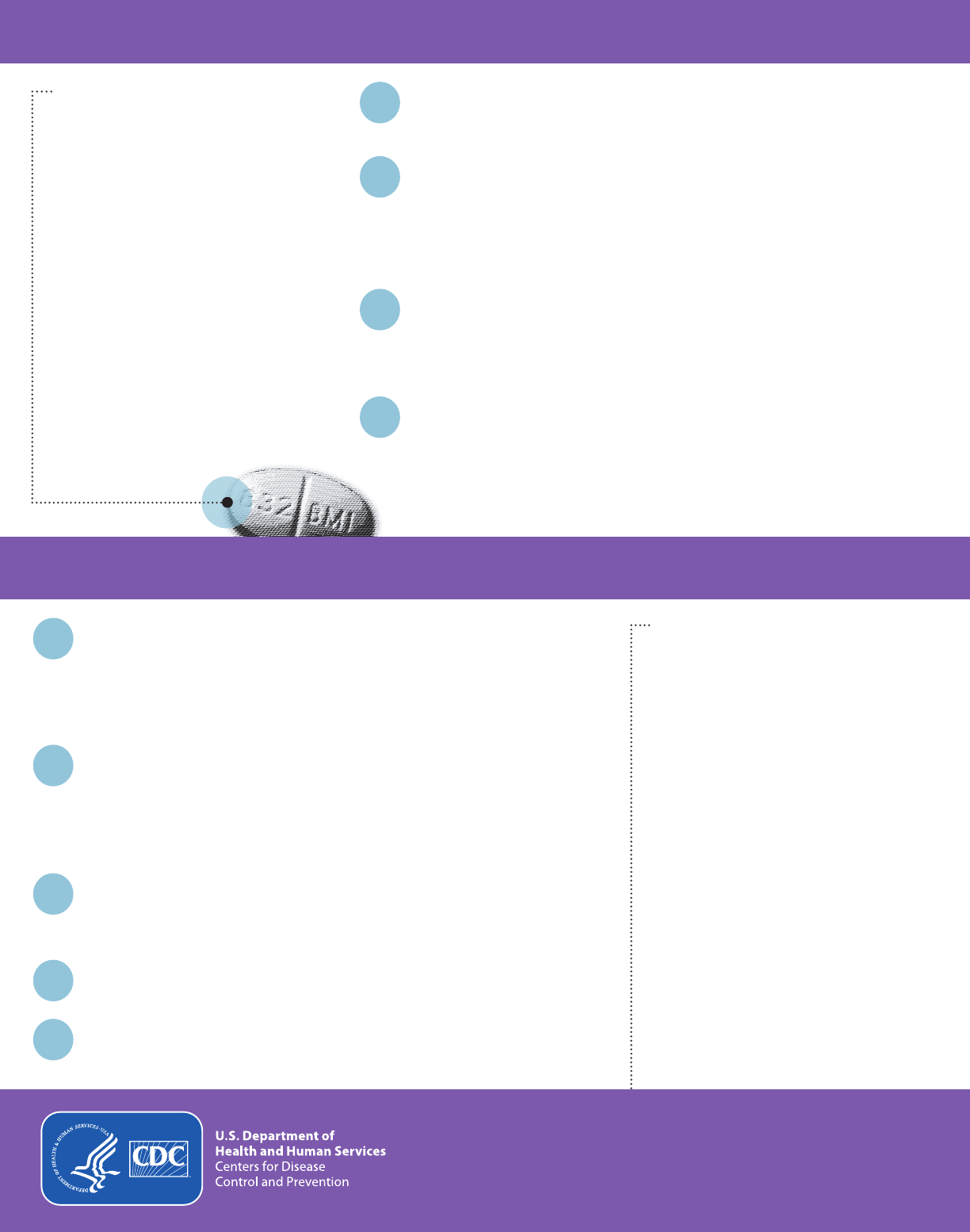
When starting opioid therapy for chronic pain, clinicians should prescribe
immediate-release opioids instead of extended-release/long-acting (ER/LA)
opioids.
When opioids are started, clinicians should prescribe the lowest effective dosage.
Clinicians should use caution when prescribing opioids at any dosage, should
carefully reassess evidence of individual benefits and risks when considering
increasing dosage to ≥50 morphine milligram equivalents (MME)/day, and should
avoid increasing dosage to ≥90 MME/day or carefully justify a decision to titrate
dosage to ≥90 MME/day.
Long-term opioid use often begins with treatment of acute pain. When opioids
are used for acute pain, clinicians should prescribe the lowest effective dose of
immediate-release opioids and should prescribe no greater quantity than needed
for the expected duration of pain severe enough to require opioids. Three days or
less will often be sufficient; more than seven days will rarely be needed.
Clinicians should evaluate benefits and harms with patients within 1 to 4 weeks
of starting opioid therapy for chronic pain or of dose escalation. Clinicians
should evaluate benefits and harms of continued therapy with patients every 3
months or more frequently. If benefits do not outweigh harms of continued opioid
therapy, clinicians should optimize other therapies and work with patients to
taper opioids to lower dosages or to taper and discontinue opioids.
OPIOID SELECTION, DOSAGE, DURATION, FOLLOW-UP, AND DISCONTINUATION
4
5
6
8
9
10
11
12
7
ASSESSING RISK AND ADDRESSING HARMS OF OPIOID USE
Before starting and periodically during continuation of opioid therapy, clinicians
should evaluate risk factors for opioid-related harms. Clinicians should
incorporate into the management plan strategies to mitigate risk, including
considering offering naloxone when factors that increase risk for opioid overdose,
such as history of overdose, history of substance use disorder, higher opioid
dosages (≥50 MME/day), or concurrent benzodiazepine use, are present.
Clinicians should review the patient’s history of controlled substance prescriptions
using state prescription drug monitoring program (PDMP) data to determine
whether the patient is receiving opioid dosages or dangerous combinations that
put him or her at high risk for overdose. Clinicians should review PDMP data when
starting opioid therapy for chronic pain and periodically during opioid therapy for
chronic pain, ranging from every prescription to every 3 months.
When prescribing opioids for chronic pain, clinicians should use urine drug testing
before starting opioid therapy and consider urine drug testing at least annually to
assess for prescribed medications as well as other controlled prescription drugs and
illicit drugs.
Clinicians should avoid prescribing opioid pain medication and benzodiazepines
concurrently whenever possible.
Clinicians should offer or arrange evidence-based treatment (usually medication-
assisted treatment with buprenorphine or methadone in combination with
behavioral therapies) for patients with opioid use disorder.
CLINICAL REMINDERS
•
Use immediate-release opioids
when starting
•
Start low and go slow
•
When opioids are needed for
acute pain, prescribe no more
than needed
•
Do not prescribe ER/LA opioids
for acute pain
•
Follow-up and re-evaluate risk
of harm; reduce dose or taper
and discontinue if needed
CLINICAL REMINDERS
•
Evaluate risk factors for
opioid-related harms
•
Check PDMP for high dosages
and prescriptions from other
providers
•
Use urine drug testing to identify
prescribed substances and
undisclosed use
•
Avoid concurrent benzodiazepine
and opioid prescribing
•
Arrange treatment for opioid use
disorder if needed
LEARN MORE | www.cdc.gov/drugoverdose/prescribing/guideline.html
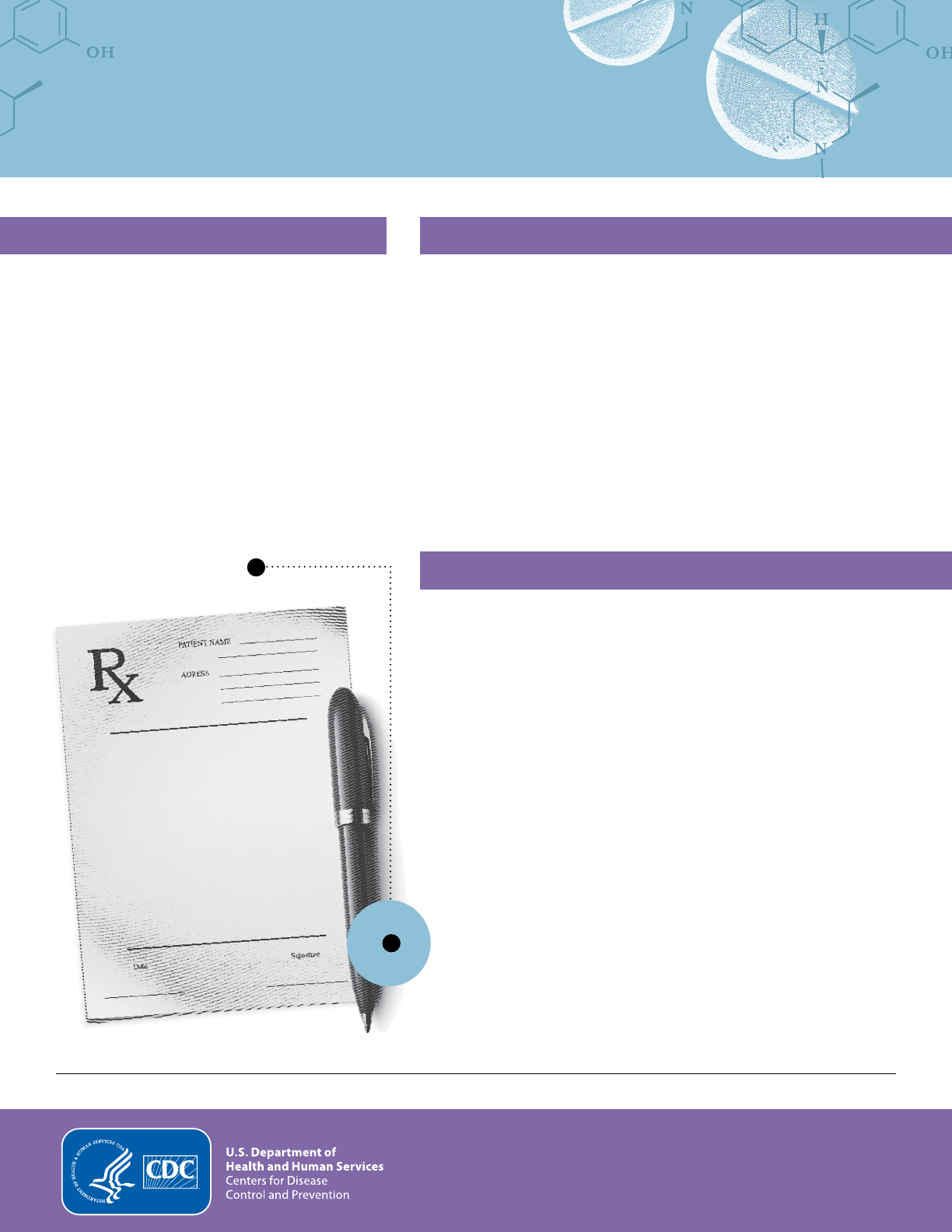
LEARN MORE | www.cdc.gov/drugoverdose/prescribing/guideline.html
ASSESSING BENEFITS AND
HARMS OF OPIOID THERAPY
THE EPIDEMIC
The United States is in the midst
of an epidemic of prescription
opioid overdose deaths, which
killed more than 14,000 people in
2014 alone.
Since 1999, sales of prescription
opioids—and related overdose
deaths—have quadrupled.
GUIDANCE FOR OPIOID PRESCRIBING
The CDC Guideline for Prescribing Opioids for Chronic Pain
1
provides up-to-date guidance on prescribing and weighing
the risks and benefits of opioids.
• Before starting and periodically during opioid therapy, discuss
the known risks and realistic benefits of opioids.
• Also discuss provider and patient responsibilities for
managing therapy.
• Within 1-4 weeks of starting opioid therapy, and at least every 3
months, evaluate benefits and harms with the patient.
ASSESS BENEFITS OF OPIOID THERAPY
Assess your patient’s pain and function regularly. A 30%
improvement in pain and function is considered clinically
meaningful. Discuss patient-centered goals and improvements
in function (such as returning to work and recreational
activities) and assess pain using validated instruments such
as the 3-item (PEG) Assessment Scale:
1. What number best describes your pain on average in the past
week? (from 0=no pain to 10=pain as bad as you can imagine)
2. What number best describes how, during the past week, pain
has interfered with your enjoyment of life? (from 0=does not
interfere to 10=completely interferes)
3. What number best describes how, during the past week, pain
has interfered with your general activity? (from 0=does not
interfere to 10=completely interferes)
If your patient does not have a 30% improvement in pain and function,
consider reducing dose or tapering and discontinuing opioids.
Continue opioids only as a careful decision by you and your patient
when improvements in both pain and function outweigh the harms.
165,000
Since 1999, there
have been more than
deaths from overdose related to
prescription opioids.
1
Recommendations do not apply to pain management in the context of active cancer treatment, palliative care, and end-of-life care.

ASSESS HARMS OF OPIOID THERAPY
Long-term opioid therapy can cause harms ranging in severity from constipation and nausea to opioid use
disorder and overdose death. Certain factors can increase these risks, and it is important to assess and follow-
up regularly to reduce potential harms.
ASSESS. Evaluate for factors that could increase your
patient’s risk for harm from opioid therapy such as:
1
•
Personal or family history of substance use disorder
•
Anxiety or depression
•
Pregnancy
•
Age 65 or older
•
COPD or other underlying respiratory conditions
•
Renal or hepatic insufficiency
2
CHECK. Consider urine drug testing for other
prescription or illicit drugs and check your state’s
prescription drug monitoring program (PDMP) for:
•
Possible drug interactions (such as
benzodiazepines)
•
High opioid dosage (≥50 MME/day)
•
Obtaining opioids from multiple providers
3
4
DISCUSS. Ask your patient about concerns and determine
any harms they may be experiencing such as:
•
Nausea or constipation
•
Feeling sedated or confused
•
Breathing interruptions during sleep
•
Taking or craving more opioids than prescribed or
difficulty controlling use
OBSERVE. Look for early warning signs for overdose
risk such as:
•
Confusion
•
Sedation
•
Slurred speech
•
Abnormal gait
If harms outweigh any experienced benefits, work with your patient to reduce dose, or taper and discontinue opioids and
optimize nonopioid approaches to pain management.
TAPERING AND DISCONTINUING OPIOID THERAPY
Symptoms of opioid withdrawal may include drug craving, anxiety, insomnia, abdominal pain, vomiting,
diarrhea, and tremors. Tapering plans should be individualized. However, in general:
Go Slow
1
Consult
2
To minimize symptoms of opioid
withdrawal, decrease 10% of the original
dose per week. Some patients who have
taken opioids for a long time might find
slower tapers easier (e.g., 10% of the
original dosage per month).
Support
3
During the taper, ensure patients
receive psychosocial support for
anxiety. If needed, work with mental
health providers and offer or arrange
for treatment of opioid use disorder.
Work with appropriate specialists
as needed—especially for those at
risk of harm from withdrawal such
as pregnant patients and those with
opioid use disorder.
Improving the way opioids are prescribed can ensure patients have access to safer, more effective chronic pain treatment
while reducing the number of people who misuse, abuse, or overdose from these drugs.
LEARN MORE | www.cdc.gov/drugoverdose/prescribing/guideline.html

Dosages at or above
50 MME/day
increase risks for overdose by at least
the risk at
<20
MME/day.
2x
CALCULATING TOTAL DAILY DOSE
OF OPIOIDS FOR SAFER DOSAGE
Patients prescribed higher opioid dosages are at higher
risk of overdose death.
In a national sample of Veterans Health Administration (VHA)
patients with chronic pain receiving opioids from 2004–2009,
patients who died of opioid overdose were prescribed an average
of 98 MME/day, while other patients were prescribed an average
of 48 MME/day.
Calculating the total daily dose of opioids helps identify
patients who may benefit from closer monitoring, reduction or
tapering of opioids, prescribing of naloxone, or other measures
to reduce risk of overdose.
50 MME/day: 90 MME/day:
• 50 mg of hydrocodone (10 tablets of hydrocodone/ • 90 mg of hydrocodone (9 tablets of hydrocodone/
acetaminophen 5/300) acetaminophen 10/325)
• 33 mg of oxycodone (~2 tablets of oxycodone • 60 mg of oxycodone 12 tablets of hydrocodone/
sustained-release 15 mg) acetaminophen 7.5/300)
• 12 mg of methadone ( <3 tablets of methadone 5 mg) • ~20 mg of methadone (4 tablets of methadone 5 mg)
Higher Dosage, Higher Risk.
Higher dosages of opioids are associated with higher risk of overdose and death—even relatively
low dosages (20-50 morphine milligram equivalents (MME) per day) increase risk. Higher dosages
haven’t been shown to reduce pain over the long term. One randomized trial found no difference
in pain or function between a more liberal opioid dose escalation strategy (with average final
dosage 52 MME) and maintenance of current dosage (average final dosage 40 MME).
WHY IS IT IMPORTANT TO CALCULATE
THE TOTAL DAILY DOSAGE OF OPIOIDS?
HOW MUCH IS 50 OR 90 MME/DAY FOR COMMONLY PRESCRIBED OPIOIDS?
LEARN MORE | www.cdc.gov/drugoverdose/prescribing/guideline.html
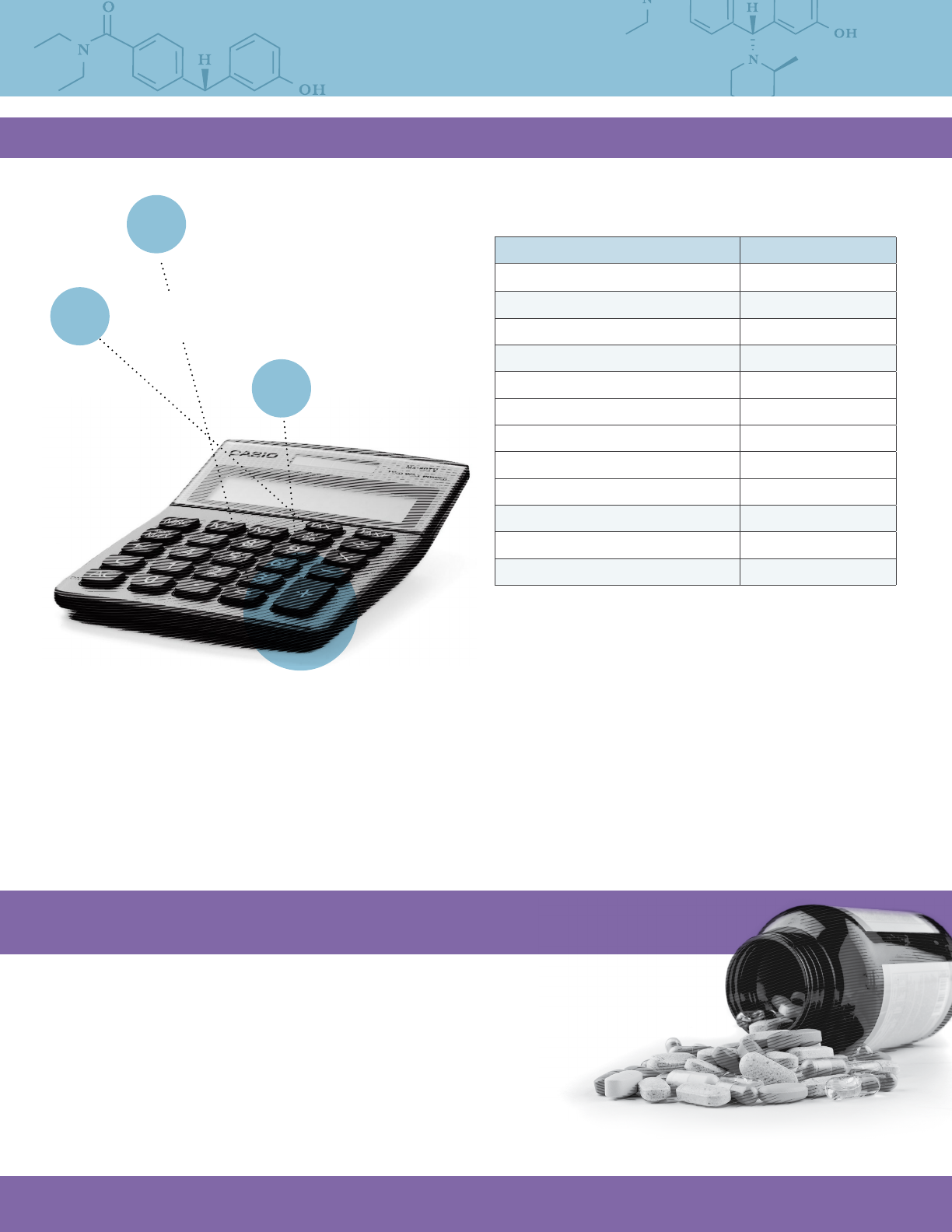
HOW SHOULD THE TOTAL DAILY DOSE OF OPIOIDS BE CALCULATED?
1
Calculating morphine milligram equivalents (MME)
DETERMINE the total daily amount
of each opioid the patient takes.
OPIOID (doses in mg/day except where noted)
CONVERSION FACTOR
Codeine 0.15
Fentanyl transdermal (in mcg/hr) 2.4
Hydrocodone 1
Hydromorphone 4
Methadone
1-20 mg/day 4
21-40 mg/day 8
41-60 mg/day 10
≥ 61-80 mg/day 12
Morphine 1
Oxycodone 1.5
Oxymorphone 3
These dose conversions are estimated and cannot account for
all individual differences in genetics and pharmacokinetics.
ADD them together.
3
2
CONVERT each to MMEs—multiply the dose for
each opioid by the conversion factor. (see table)
CAUTION:
• Do not use the calculated dose in MMEs to determine
dosage for converting one opioid to another—the new
opioid should be lower to avoid unintentional overdose
caused by incomplete cross-tolerance and individual
differences in opioid pharmacokinetics. Consult the
medication label.
USE EXTRA CAUTION:
• Methadone: the conversion factor increases at
higher doses
• Fentanyl:
dosed in mcg/hr instead of mg/day, and
absorption is affected by heat and other factors
HOW SHOULD PROVIDERS USE THE TOTAL
DAILY OPIOID DOSE IN CLINICAL PRACTICE?
• Use caution when prescribing opioids at any dosage and prescribe the lowest effective dose.
• Use extra precautions when increasing to
≥
50 MME per day such as:
- Monitor and assess pain and function more frequently.
- Discuss reducing dose or tapering and discontinuing opioids
if benefits do not outweigh harms.
- Consider offering naloxone.
• Avoid or carefully justify increasing dosage to ≥90 MME/day.
LEARN MORE | www.cdc.gov/drugoverdose/prescribing/guideline.html
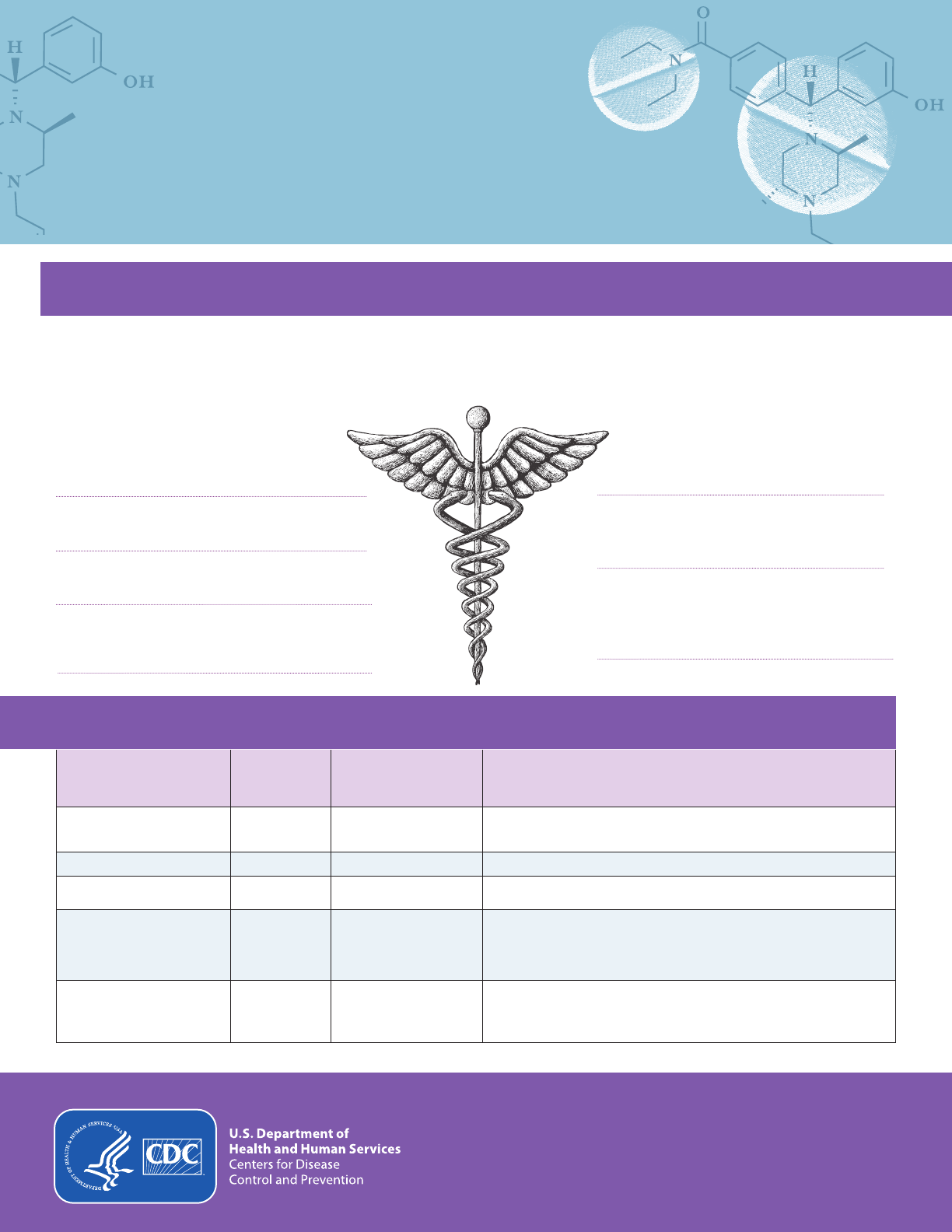
CS263451
March 14, 2016
NONOPIOID TREATMENTS
FOR CHRONIC PAIN
PRINCIPLES OF CHRONIC PAIN TREATMENT
Patients with pain should receive treatment that provides the greatest benefit. Opioids are not the first-line therapy for
chronic pain outside of active cancer treatment, palliative care, and end-of-life care. Evidence suggests that nonopioid
treatments, including nonopioid medications and nonpharmacological therapies can provide relief to those suffering
from chronic pain, and are safer. Effective approaches to chronic pain should:
Use nonopioid therapies to the extent possible
Identify and address co-existing mental health
conditions (e.g., depression, anxiety, PTSD)
Focus on functional goals and improvement, engaging
patients actively in their pain management
Use disease-specific treatments when available (e.g.,
triptans for migraines, gabapentin/pregabalin/duloxetine
for neuropathic pain)
Use first-line medication options preferentially
Consider interventional therapies (e.g.,
corticosteroid injections) in patients who fail
standard non-invasive therapies
Use multimodal approaches, including
interdisciplinary rehabilitation for patients who have
failed standard treatments, have severe functional
deficits, or psychosocial risk factors
NONOPIOID MEDICATIONS
Medication
Magnitude
of benefits
Harms Comments
Acetaminophen Small
Hepatotoxic, particularly at
higher doses
First-line analgesic, probably less effective than NSAIDs
NSAIDs Small-moderate Cardiac, GI, renal First-line analgesic, COX-2 selective NSAIDs less GI toxicity
Gabapentin/pregabalin Small-moderate Sedation, dizziness, ataxia
First-line agent for neuropathic pain; pregabalin approved for fibromyalgia
Tricyclic antidepressants and
serotonin/norephinephrine
reuptake inhibitors
Small-moderate
TCAs have anticholinergic
and cardiac toxicities;
SNRIs safer and better
tolerated
First-line for neuropathic pain; TCAs and SNRIs for fibromyalgia, TCAs for
headaches
Topical agents (lidocaine,
capsaicin, NSAIDs)
Small-moderate
Capsaicin initial flare/
burning, irritation of
mucus membranes
Consider as alternative first-line, thought to be safer than systemic
medications. Lidocaine for neuropathic pain, topical NSAIDs for localized
osteoarthritis, topical capsaicin for musculoskeletal and neuropathic pain
LEARN MORE | www.cdc.gov/drugoverdose/prescribing/guideline.html
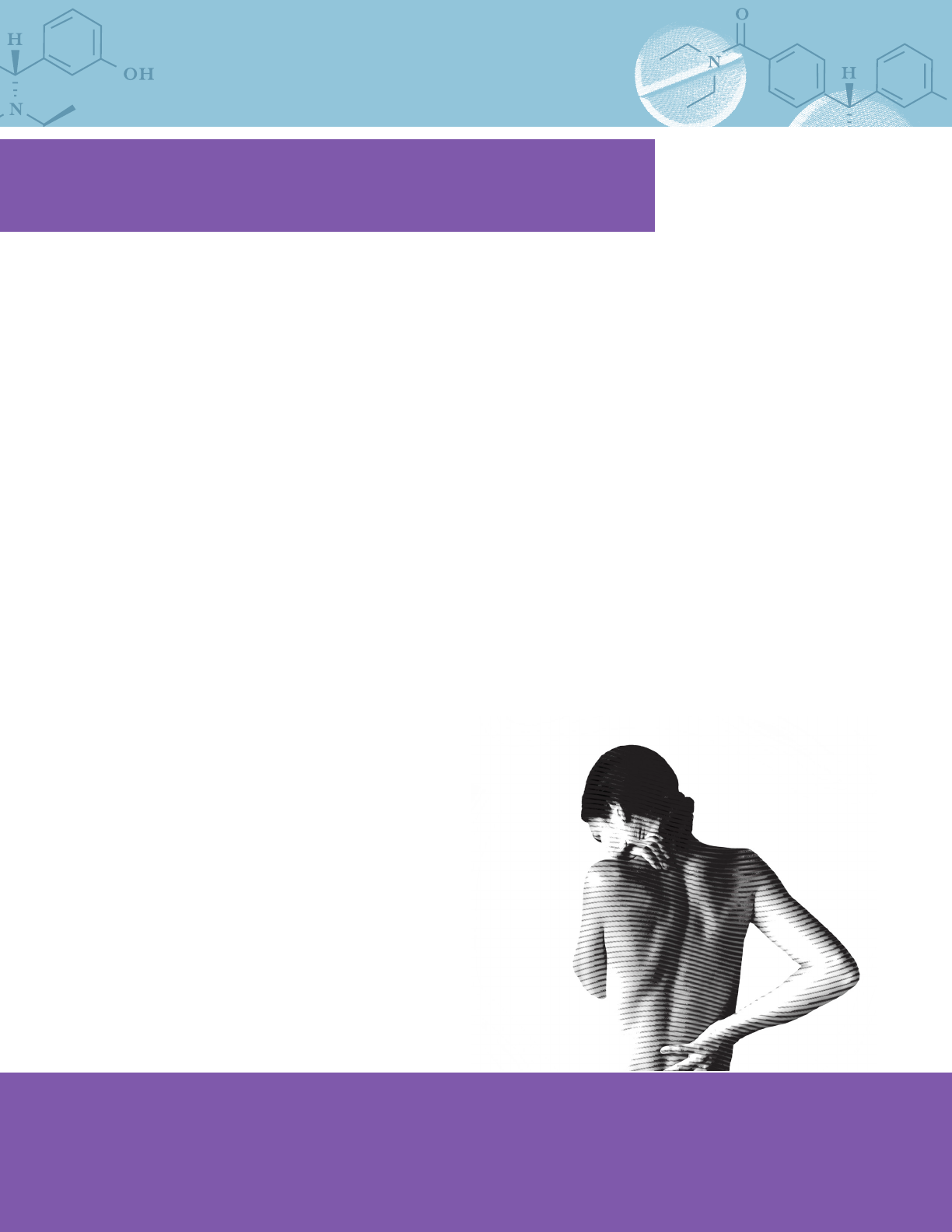
RECOMMENDED TREATMENTS FOR
COMMON CHRONIC PAIN CONDITIONS
LEARN MORE | www.cdc.gov/drugoverdose/prescribing/guideline.html
Low back pain
Self-care and education in all patients; advise
patients to remain active and limit bedrest
Nonpharmacological treatments: Exercise, cognitive
behavioral therapy, interdisciplinary rehabilitation
Medications
• First line: acetaminophen, non-steroidal anti inflammatory
drugs (NSAIDs)
•
Second line: Serotonin and norepinephrine reuptake inhibitors
(SNRIs)/tricyclic antidepressants (TCAs)
Migraine
Preventive treatments
• Beta-blockers
• TCAs
• Antiseizure medications
• Calcium channel blockers
• Non-pharmacological treatments (Cognitive behavioral
therapy, relaxation, biofeedback, exercise therapy)
• Avoid migraine triggers
Acute treatments
• Aspirin, acetaminophen, NSAIDs (may be combined with
caffeine)
• Antinausea medication
• Triptans-migraine-specific
Neuropathic pain
Medications: TCAs, SNRIs, gabapentin/pregabalin,
topical lidocaine
Osteoarthritis
Nonpharmacological treatments: Exercise, weight
loss, patient education
Medications
• First line: Acetamionphen, oral NSAIDs, topical NSAIDs
• Second line: Intra-articular hyaluronic acid, capsaicin
(limited number of intra-articular glucocorticoid injections if
acetaminophen and NSAIDs insufficient)
Fibromyalgia
Patient education: Address diagnosis, treatment,
and the patient’s role in treatment
Nonpharmacological treatments: Low-impact
aerobic exercise (i.e. brisk walking, swimming, water
aerobics, or bicycling), cognitive behavioral therapy,
biofeedback, interdisciplinary rehabilitation
Medications
• FDA-approved: Pregabalin, duloxetine, milnacipran
• Other options: TCAs, gabapentin
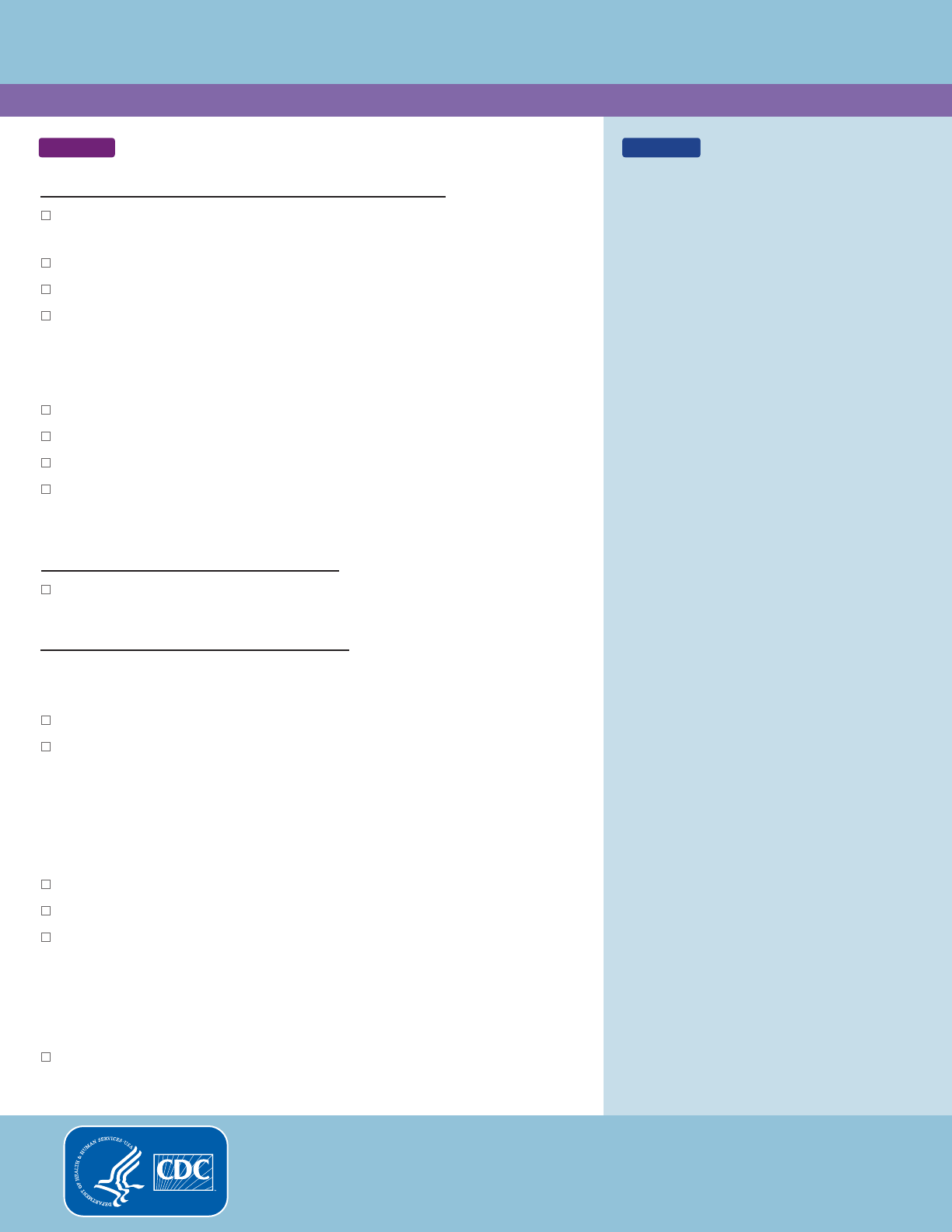
Checklist for prescribing opioids for chronic pain
For primary care providers treating adults (18
+
) with chronic pain ≥ 3 months, excluding cancer, palliative, and end-of-life care
CHECKLIST
When CONSIDERING long-term opioid therapy
Set realistic goals for pain and function based on diagnosis
(eg, walk around the block).
Check that non-opioid therapies tried and optimized.
Discuss benets and risks (eg,addiction, overdose) with patient.
Evaluate risk of harm or misuse.
•
Discuss risk factors with patient.
•
Check prescription drug monitoring program (PDMP) data.
•
Check urine drug screen.
Set criteria for stopping or continuing opioids.
Assess baseline pain and function (eg, PEG scale).
Schedule initial reassessment within 1
–
4 weeks.
Prescribe short-acting opioids using lowest dosage on product labeling;
match duration to scheduled reassessment.
If RENEWING without patient visit
Check that return visit is scheduled ≤ 3months from last visit.
When REASSESSING at return visit
Continue opioids only after conrming clinically meaningful improvements
in pain and function without signicant risks or harm.
Assess pain and function (eg, PEG); compare results to baseline.
Evaluate risk of harm or misuse:
•
Observe patient for signs of over-sedation or overdose risk.
– If yes: Taper dose.
•
Check PDMP.
•
Check for opioid use disorder if indicated (eg, difculty controlling use).
– If yes: Refer for treatment.
Check that non-opioid therapies optimized.
Determine whether to continue, adjust, taper, or stop opioids.
Calculate opioid dosage morphine milligram equivalent (MME).
•
If ≥ 50 MME /day total (≥ 50 mg hydrocodone; ≥ 33 mgoxycodone),
increase frequency of follow-up; consider offering naloxone.
•
Avoid ≥ 90 MME /day total (≥ 90 mg hydrocodone; ≥ 60 mg oxycodone),
or carefully justify; consider specialist referral.
Schedule reassessment at regular intervals (≤ 3months).
REFERENCE
EVIDENCE ABOUT OPIOID THERAPY
• Benets of long-term opioid therapy for chronic
pain not well supported by evidence.
• Short-term benets small to moderate for pain;
inconsistent for function.
• Insufcient evidence for long-term benets in
low back pain, headache, and bromyalgia.
NON-OPIOID THERAPIES
Use alone or combined with opioids, as indicated:
•
Non-opioid medications (eg,NSAIDs, TCAs,
SNRIs, anti-convulsants).
•
Physical treatments (eg,exercise therapy,
weight loss).
•
Behavioral treatment (eg,CBT).
•
Procedures (eg,intra-articular corticosteroids).
EVALUATING RISK OF HARM OR MISUSE
Known risk factors include:
•
Illegal drug use; prescription drug use for
nonmedical reasons.
•
History of substance use disorder or overdose.
•
Mental health conditions (eg, depression, anxiety).
•
Sleep-disordered breathing.
•
Concurrent benzodiazepine use.
Urine drug testing: Check to conrm presence
of prescribed substances and for undisclosed
prescription drug or illicit substance use.
Prescription drug monitoring program (PDMP):
Check for opioids or benzodiazepines from
other sources.
ASSESSING PAIN & FUNCTION USING PEG SCALE
PEG score = average 3 individual question scores
(30% improvement from baseline is clinically meaningful)
Q1: What number from 0
–
10 best describes
your pain in the past week?
0 = “no pain”, 10 = “worst you can imagine”
Q2: What number from 0
–
10 describes how,
during the past week, pain has interfered
with your enjoyment of life?
0 = “not at all”, 10 = “complete interference”
Q3: What number from 0
–
10 describes how,
during the past week, pain has interfered
with your general activity?
0 = “not at all”, 10 = “complete interference”
TO
LEARN MORE
www.cdc.gov/drugoverdose/prescribing/guideline.html
U.S. Department of
Health and Human Services
Centers for Disease
Control and Prevention
March 2016
